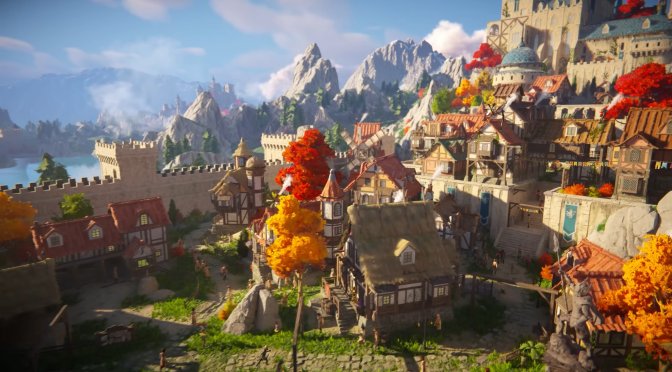This week, Unity Technologies introduced Unity 6, the latest version of its Unity Engine. To demonstrate what it can do, the team released a video showing off its key features. But when you compare it to what Unreal Engine 5 has accomplished, Unity 6’s tech demo falls short. So, let’s take a look at it.
Unity 6 comes with some cool upgrades. This new version aims to make games run faster on it. So, some of the performance technologies developers can use are GPU Resident Drawer, GPU Occlusion Culling, and Spatial-Temporal Post-Processing. These changes will make games run smoother. And trust me, after checking out Cities Skylines 2, Unity totally needed these upgrades. Let’s now hope that developers will take advantage of them.
Unity 6 will also bring some other cool stuff. It will have Adaptive Probe Volumes, making the lighting and nature scenes in games even more realistic. It will also have better SpeedTree integration. And there’s more. It will further boost performance with GPU Resident Drawer, GPU Occlusion Culling, and Spatial-Temporal Post-Processing (STP). Oh, and there will be support for WebGPU, letting you play games on the web, in browsers, and even in apps.
Now while everything on paper seems great, this first tech demo does not look particularly impressive. I mean, look at it. Does this make you say <<Wow, that’s a huge step from the previous Unity Engine>>? Perhaps the team focused on efficiency and not on fancy graphics. The point is that the end result is a bit underwhelming.
In the Unity 6 tech demo, there are numerous pop-in issues, and it’s kind of a bummer. Unreal Engine 5, with its Nanite, is way better. Nanite makes things show up in games super smoothly, without annoying pop-ins. Try playing some UE5 games, then switch to others like Cyberpunk 2077 or Alan Wake 2. You’ll immediately notice the difference. It’s a game-changer.
I also wasn’t impressed by the lighting of this Unity 6 Tech Demo. There is nothing here that can rival UE5’s Lumen. Sure thing, developers will be able to use Ray Tracing. But RT (as well as Path Tracing) can be implemented in every engine. What I’m saying is that the default lighting solution does not appear to be that amazing.
Let’s also not forget that Unity games never quite matched up to their impressive tech demos. Show me one game that looks as good as the Enemies Tech Demo or The Heretic tech demo. Or what about the Unity Engine Megacity tech demo? Hell, even the ADAM Tech Demo from 2018 looks better than every Unity game. It’s a shame really as these tech demos looked spectacular. And I know, some will say that UE5’s The Matrix Demo is also beyond what UE5 games currently look like. However, The Matrix Demo showcases next-gen visuals. That’s not really the case with Unity 6.
All in all, I’m a bit disappointed by this first Unity 6 Tech Demo. I’m certain that the team can push the engine further. Tech demos can also look better with Ray Tracing. But, without RT, Unity 6 already feels dated. And that’s really a bummer.
Stay tuned for more!

John is the founder and Editor in Chief at DSOGaming. He is a PC gaming fan and highly supports the modding and indie communities. Before creating DSOGaming, John worked on numerous gaming websites. While he is a die-hard PC gamer, his gaming roots can be found on consoles. John loved – and still does – the 16-bit consoles, and considers SNES to be one of the best consoles. Still, the PC platform won him over consoles. That was mainly due to 3DFX and its iconic dedicated 3D accelerator graphics card, Voodoo 2. John has also written a higher degree thesis on the “The Evolution of PC graphics cards.”
Contact: Email

